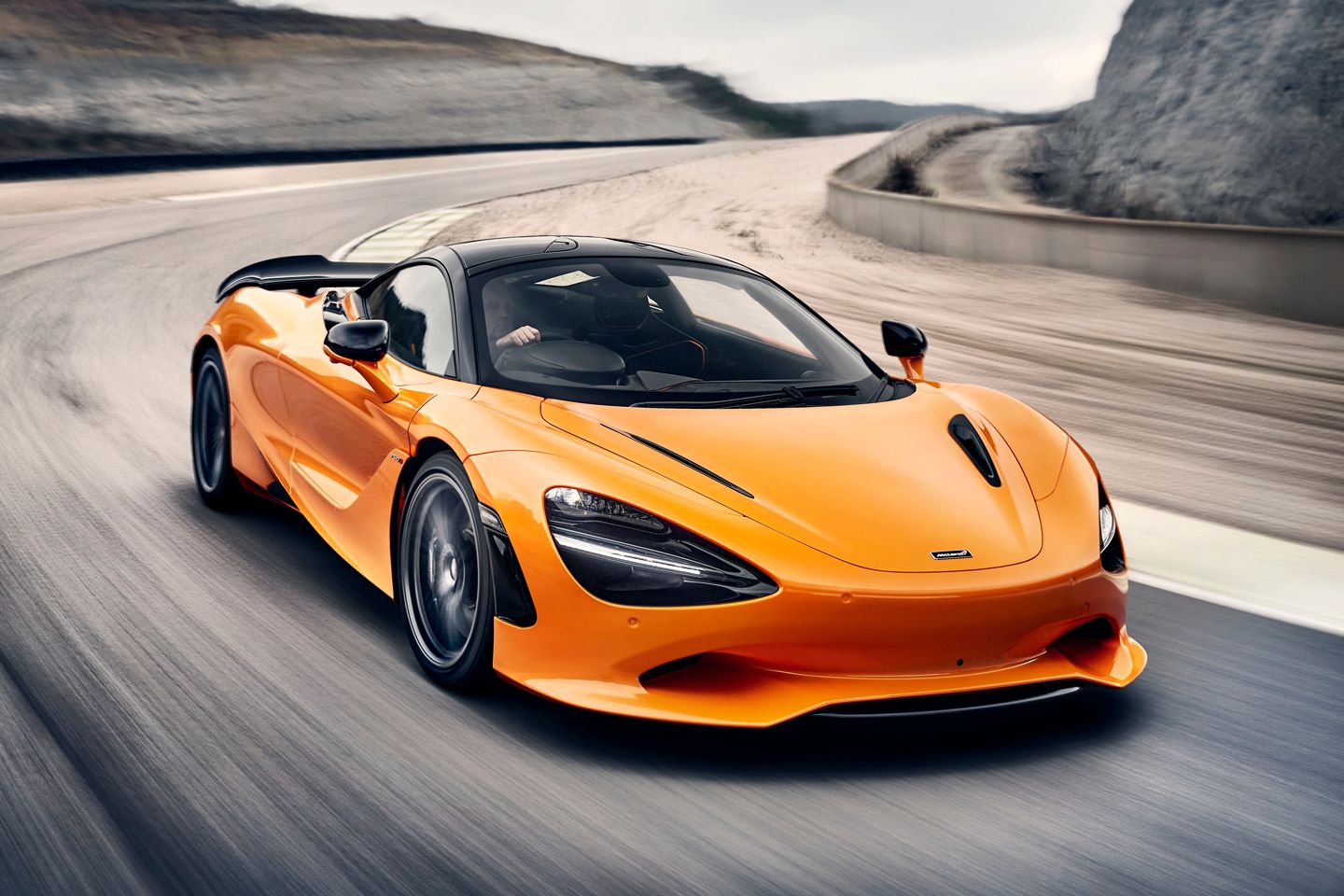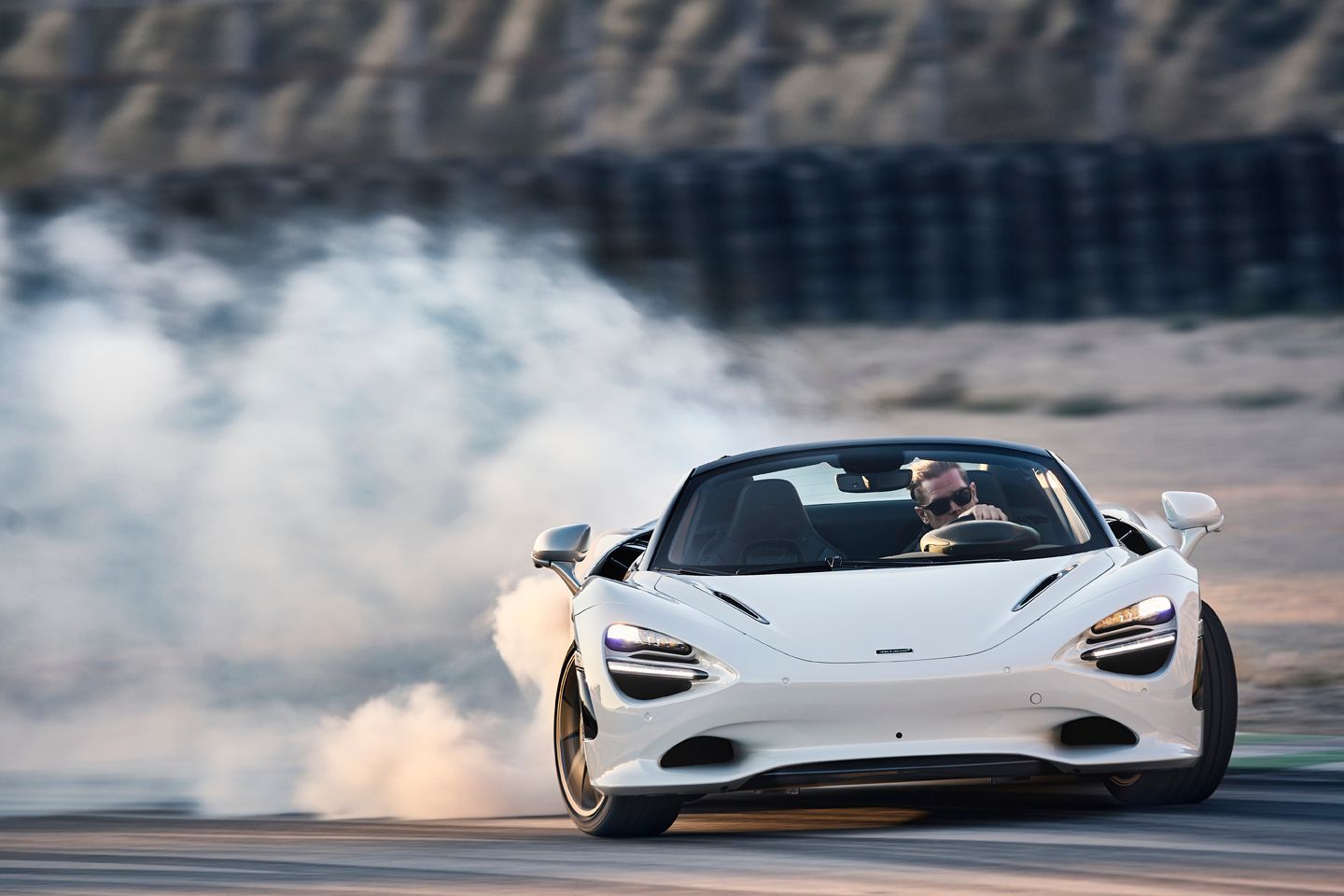For all the specialness of its cars, McLaren Automotive was created around a simple idea. One that Ron Dennis helpfully explained when I interviewed him in what was then the still-fresh McLaren Technical Centre back in 2009, well before any car had been delivered.
“Effectively every year there’ll be a different product,” Dennis said, “it will either be a derivative – a coupe or a targa or a GT – or it will be a different model. But there will be, in broad principles, a new car of one sort or another every single year for 12 years.”
Start that clock running when the MP4-12C was launched in 2011 and those numbers are actually an understatement; by my reckoning there were 18 distinct models or variants on Ron’s definition by 2023. And while he left McLaren in 2017 his vision of a model range built around a shared core architecture was absolutely borne out. The current 750S sits on the same Monocell or Monocage platform that the 12C did, and uses developed versions of the same twin-turbo V8 and double-clutch transmission.
But while McLaren has delivered many exceptional products during its short lifespan – the P1, Senna, 720S and three ‘LT’ variants the brightest highlights – it has also hit some major problems. Even before COVID struck the company was starting to struggle, lack of demand for the stripped-to-nothing seven-figure Elva seeing planned production cut from 399 to 249 just before the pandemic started. It was later trimmed further, to just 149. Then there was the GT, which nobody outside of McLaren’s marketing department ever took seriously as a true grand tourer.

But it was COVID that brought the existential crisis as sales dried up and McLaren shed a quarter of its workforce. The company was forced to raise cash to keep going by mortgaging both its space-aged HQ and even its heritage car collection. The launch of the Artura, the first car to sit on McLaren’s new platform, was repeatedly delayed and there were two well-publicised ‘thermal incidents’ on the media drive. CEO Mike Flewitt departed abruptly in 2021, and McLaren’s financial situation remained precarious. According to the most recent sets of published accounts, McLaren lost £873m last year. That equates to more than £400,000 for each of the 2,137 cars it sold.
But, behind the scenes, McLaren has also been transforming itself. It gained a new boss in July 2022 when Michael Leiters joined as CEO, the German executive having previously been Ferrari’s head of technology and before that worked for Porsche. He has already made some much-needed organisational changes and overseen the simplification of McLaren’s ownership structure – Bahrain’s sovereign wealth fund, Mumtalakat, took full control earlier this year and now owns 100 per cent. Leiters has also been busy planning McLaren’s future, which is the stuff I really wanted to talk about when I interviewed him at MTC in Woking last month, his office just across the hall from where I spoke to Ron Dennis 15 years ago.
First, and most important, McLaren will continue to do what it has done best. “We want to develop the core business for the future,” Leiters says, “we have had a difficult year, and difficult years in the past, and we want to become a sustainable company. This is based on the segment we are in today, so supercars and ultimate cars. That’s what our first focus is.”
Leading to the obvious question as to what comes next, one Leiters answers before I ask it. “To unlock our full potential as a company we believe there is a second stage – to enlarge and expand our lineup beyond the segment where we are today. We called it ‘shared performance’, because you can share the performance with more people than you can have in a McLaren today.”

Which, in the manner of other supercar makers being similarly coy, is a way of effectively not-quite saying SUV; something that will compete against cars like the Ferrari Purosangue, Lamborghini Urus and Aston Martin DBX 707. Leiter’s reticence here is understandable given that Flewitt repeatedly pledged McLaren would not produce an SUV.
While this new ‘shared performance’ model – or models – is an aspiration rather than a signed-off part of the plan (the mock-up below is courtesy of DeepAI’s image generator) considerable thought has already been put into its creation. Given McLaren’s lack of an SUV platform, there is no surprise in Leiters’ acknowledgement this would be done in conjunction with another manufacturer. “I think the smart way is with technology partnership,” he says, “to find a partner and to create synergies, but not to lose anything which is core to McLaren and the DNA of our brand.”
Then things get more complicated. While much of the ultra-luxury SUV segment is going to be turning fully electric – something Leiters admits is a possibility – he is keener for it to be a plug-in hybrid.
“We are open on these scenarios, and if we do a PHEV we want to understand if we can use our own powertrain,” he says. “If we were to integrate our powertrain into an existing platform that would be the ideal world.”

This line is delivered casually enough to leave the cogs of my brain spinning as I try to catch up. What Leiters is suggesting is a McLaren sitting on another manufacturer’s core architecture, and likely built in the partner’s factory, but powered by either the PHEV V6 from the Artura or, more likely in this part of the market, the brawnier V8 plug-in that McLaren is developing for the 750S replacement.
Leiters won’t drop hints about possible partners, but there is an obvious one. McLaren has previously held talks with BMW over a technical collaboration, and the bigger company already has its own high-performance PHEV SUV in the form of the XM. Would it be possible to build a credible McLaren product on the same underpinnings?
Well, it certainly wouldn’t be hard for McLaren’s new design director, Tobias Sühlmann, to create something better-looking. But Leiters also suggests McLaren might want to make deeper changes to distinguish its product from the wider market. “For me, the core attribute of a McLaren is lightweight. Whatever is needed to have it, we will invest in the technology,” he says, “we have world-class competence we could bring into a partnership, even talking about structural elements of a platform.”
Don’t worry too hard, Leiters has also put plenty of thought into the future of more traditional McLarens. He confirms that the 750S will be the last model to use the company’s old Monocell or Monocage architecture, with everything switching to the much more flexible second-gen Sheffield-built MCLA platform that sits under the Artura. The V8 PHEV powertrain will definitely go into the 750S replacement, but is also likely to star in the son-of-P1 hypercar that we’re expecting to see first.

Will this mean all-wheel drive through an electrically powered front axle? Ferrari and Lamborghini have switched their higher-output PHEVs to e-AWD, but Leiters won’t confirm McLaren will follow: “That’s a detail I don’t want to share yet.” The very possibility it won’t use such a system raises the secondary question of how much power McLaren thinks is appropriate for a single pair of driven wheels in a road car. Could the company really go beyond the 789hp of the track-biased Senna, or even the 903hp of the hybridized P1?
“Why not?” says Leiters. “But it has to be controllable. When we talk about the importance of emotions to the brand, a negative emotion is getting scared. I think our cars are really easy to drive – and to push our cars to the border shouldn’t be a problem for a non-expert driver. I understand that traction is a question, but there is so much potential in aerodynamics, downforce, tyre development, powertrain controls – I believe there is still a lot of space.”
Given that Leiters also confirms that the ultimate P1 replacement will have to deliver performance at the very top of its segment – something suggesting a four-figure power output to rival the Ferrari SF90 XX and Lamborghini Revuelto, we should be expecting something truly spectacular.
But McLaren is also looking to the further future, with the development of an EV supercar. “We have started, and are working intensively, on a pure electric powertrain,” Leiters says, “this should define how an [electric] supercar should be… I am convinced the first EV supercar will be a McLaren. We understand what it means to make supercars, and if we are not able to do that then nobody else will be able to do that.”

This may sound punchy given there are already mega-fast two-seat EVs like the Rimac Nevera and Pininfarina Battista. But Leiters makes clear his definition is based on weight, not just performance.
“For me, a supercar that weighs two tonnes is no supercar,” he says, “it is easy to have a better power output to increase performance. This is longitudinal performance, if you like – acceleration. But the better question is what is the lateral performance? You cannot deliver that if the weight is too high.”
To that end, McLaren is focused on reducing the mass of an EV supercar to minimise the penalty over a combustion version, while still ensuring it can carry enough battery to give decent range and performance. How close could this McLaren EV get to the weight of a PHEV like the 1,500kg Artura? “Very close, very close indeed,” he says, “that’s the target.”
Demand remains an unknown. Rimac recently confirmed it hasn’t been able to sell the full run of 150 Neveras, suggesting potential buyers in this part of the market are still unenthused by the prospect of pure EVs. Leiters admits this is a challenge, but one McLaren needs to be ready for.

“I think as a company we have to be prepared. Rule makers will decide that,” he says, “what happens if one day the market changes and the majority of customers, not a minority, are asking for that? It depends on the attributes, if you can realise a really engaging, emotional product it can work.”
One of the changes that Leiters has already made has been a deliberate reduction in production to help protect residual values, something which the company has often struggled with.
“I won’t speak so much about volumes but about revenue,” he says, “if you take the volume you have done in the past it is clear we have sometimes oversupplied the market. We won’t do that any more, never again. We will supply to demand… you can’t shoot out special editions every six months. You have to give them time to create a market and a demand and an excitement, to make sure they have the right attention and respect. That is crucial.”
There is still a huge amount to do to turn McLaren’s fortunes around and bring it back to viability. But in Michael Leiters the company has a boss with both the ambition and, crucially, a plan to do so.

